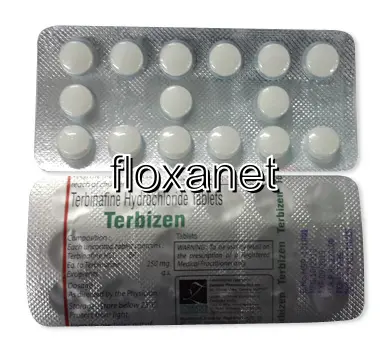Buy Terbinafine Online in Australia
| Package | Dosage | Price | Price per Dose | |
|---|---|---|---|---|
| Dosage: 250mg | ||||
| 120 pill | 250mg | AUD1,174.43 | AUD9.79 | |
| 90 pill | 250mg | AUD924.41 | AUD10.27 | |
| 60 pill | 250mg | AUD647.08 | AUD10.80 | |
| 30 pill | 250mg | AUD346.64 | AUD11.56 | |
| 10 pill | 250mg | AUD132.34 | AUD13.22 | |

Terbinafine Description
Understanding Terbinafine
Terbinafine is a widely used antifungal medication that effectively treats various fungal infections of the skin and nails. It belongs to the class of allylamines, working by inhibiting an enzyme essential for fungal cell membrane production. This mechanism results in the death of the fungi, helping to eliminate the infection quickly. The medication is available in different forms, including topical creams, gels, and oral tablets, allowing for versatile use depending on the severity and location of the infection.
Uses and Effectiveness
Terbinafine is most commonly prescribed for conditions such as athlete's foot, ringworm, and fungal infections of the nails (onychomycosis). Many patients report noticeable improvements within a few weeks of consistent use. The medication is highly effective against dermatophyte fungi, which are common culprits in skin and nail infections. It is particularly valued for its ability to clear infections faster compared to some other antifungal agents. However, the success of the treatment depends on correct dosage and adherence to the prescribed course.
Advantages of Terbinafine
One of the main advantages of terbinafine is its targeted action combined with a relatively short treatment duration. For skin infections, topical forms are convenient, easy to apply, and generally well-tolerated. Oral terbinafine is usually prescribed for more stubborn or extensive infections, especially nail infections that are difficult to treat. Many users appreciate how quickly the medication can lead to relief from symptoms such as itching, redness, and scaling. Moreover, terbinafine’s side effects are typically mild when used as directed.
Potential Side Effects and Precautions
While generally safe, terbinafine may cause side effects in some individuals. Common reports include gastrointestinal discomfort, such as nausea or diarrhea, and skin reactions like rash or itching. Rarely, more serious issues such as liver problems or allergic reactions can occur. It is essential for users to inform their healthcare provider about any pre-existing conditions, especially liver issues, before starting treatment. Regular liver function tests might be recommended during prolonged therapy. Pregnant and breastfeeding women should consult their doctor before using terbinafine to weigh potential risks and benefits.
Usage Guidelines and Tips
Following the prescribed dosage carefully enhances the medication's effectiveness. For topical forms, it’s important to clean and dry the affected area thoroughly before application. Usually, the cream or gel should be applied twice daily until the infection clears, which can take several weeks. Oral terbinafine is typically taken once daily, with or without food, depending on the specific instructions. Patients should complete the full course of treatment even if symptoms improve early, to ensure complete eradication of the fungus and prevent recurrence.
Conclusion
Overall, terbinafine remains a reliable and potent option for treating common fungal infections. Its ability to act quickly and effectively makes it a preferred choice for many healthcare providers. When used appropriately, it offers significant symptom relief and helps restore skin and nail health. As with any medication, adherence to medical advice and monitoring for side effects are crucial to achieving the best outcomes from terbinafine therapy.
